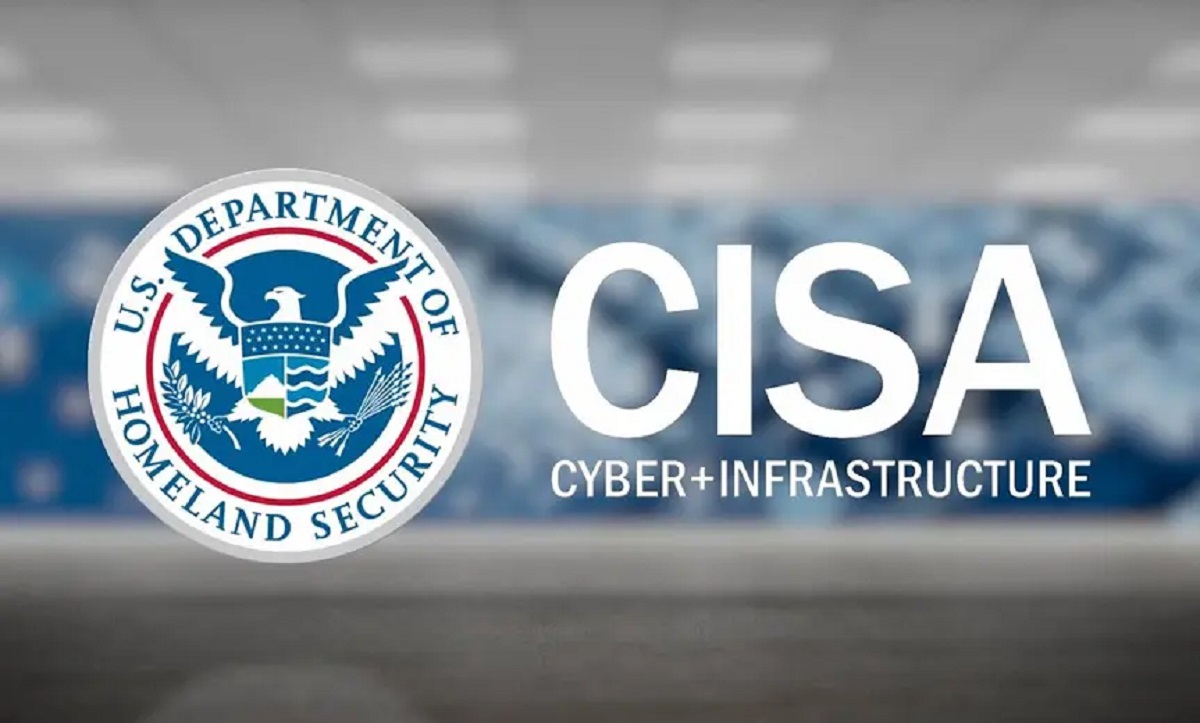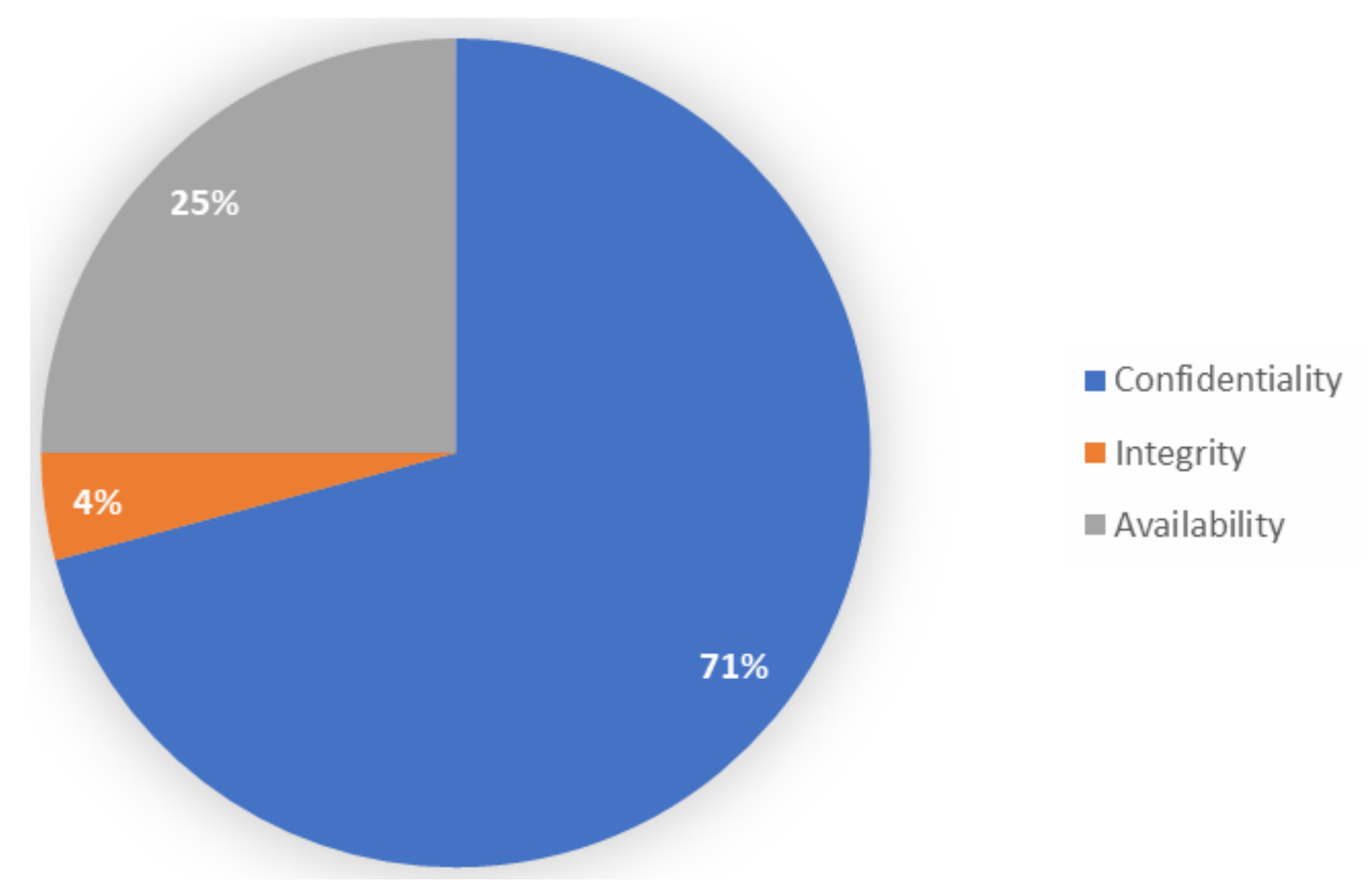Introduction
The Cybersecurity and Infrastructure Security Agency (CISA) is a federal agency in the United States that plays a critical role in protecting the nation’s infrastructure and ensuring its cybersecurity. Established in 2018 under the Department of Homeland Security (DHS), CISA works to safeguard the country’s critical systems and networks from cyber threats.
With the rise in cybercrime and the increasing reliance on digital infrastructure, the need for a dedicated agency to address cybersecurity challenges became evident. CISA was created to improve the coordination and collaboration between government entities, private sector organizations, and international partners.
CISA’s primary mission is to prevent and respond to cyber threats, providing a centralized point of contact for both government and private sector organizations seeking support in strengthening their security posture. By leveraging its expertise, resources, and partnerships, CISA aims to enhance the resilience of the nation’s critical infrastructure, including financial systems, energy grids, transportation networks, and communication systems.
As the threat landscape evolves, CISA continually adapts its strategies and initiatives to address emerging risks. The agency works closely with stakeholders to assess vulnerabilities, develop cybersecurity capabilities, and coordinate incident response efforts. By fostering information sharing and implementing proactive measures, CISA endeavors to stay one step ahead of cyber adversaries.
In this article, we will delve deeper into the role, responsibilities, and initiatives undertaken by CISA to protect the nation’s critical infrastructure and combat cyber threats. We will explore its collaboration with government and private sector organizations, highlight its programs and services, and showcase CISA’s contributions to national security.
What is the Cybersecurity and Infrastructure Security Agency (CISA)?
The Cybersecurity and Infrastructure Security Agency (CISA) is a government agency within the Department of Homeland Security (DHS) that has been established to protect the critical infrastructure of the United States. CISA focuses on safeguarding the nation’s cyber and physical infrastructure from various threats, including cyberattacks, natural disasters, and physical intrusions.
CISA is responsible for coordinating and collaborating with federal, state, local, tribal, and territorial governments, as well as private sector organizations, to ensure the resilience of the country’s critical infrastructure. By providing essential services and support, CISA aims to mitigate risks, respond effectively to incidents, and enhance the overall security of the nation.
One of CISA’s primary roles is to act as a central hub for sharing information and intelligence related to cybersecurity and infrastructure security. Through its partnerships with various entities, including government agencies, international organizations, and the private sector, CISA facilitates the exchange of actionable intelligence to help defend against cyber threats and protect critical systems.
CISA also plays a vital role in analyzing and assessing the risks and vulnerabilities in the country’s critical infrastructure sectors. By conducting thorough evaluations, CISA identifies potential weaknesses, develops mitigation strategies, and promotes best practices to strengthen the security posture of critical infrastructure operators.
Besides its protective role, CISA is actively involved in responding to and recovering from incidents that may impact the nation’s critical infrastructure. It provides technical assistance, incident response coordination, and other support to government and private sector organizations during cyber and physical security events.
Overall, the Cybersecurity and Infrastructure Security Agency (CISA) is a crucial entity in the United States’ efforts to ensure the security and resilience of its critical infrastructure. By promoting collaboration, sharing information, and providing essential services, CISA plays a pivotal role in safeguarding the nation from cyber threats and maintaining the integrity of its infrastructure.
The Role of CISA in Cybersecurity
The Cybersecurity and Infrastructure Security Agency (CISA) plays a pivotal role in enhancing the cybersecurity posture of the United States. With the ever-evolving cybersecurity landscape, CISA’s mandate is to lead and coordinate efforts across different sectors to identify, protect against, and respond to cyber threats. It collaborates with various stakeholders to ensure the security and resilience of the nation’s critical infrastructure.
One of the key roles of CISA is to provide guidance, resources, and technical expertise to government agencies and private sector organizations. Through its extensive knowledge base and partnerships, CISA helps organizations in developing robust cybersecurity policies and implementing effective security measures. It offers best practices, risk assessments, and cybersecurity tools to protect networks, systems, and data.
CISA also takes a proactive approach to identify potential vulnerabilities and mitigate risks in critical infrastructure sectors. Through its vulnerability assessments and cybersecurity evaluations, CISA identifies weaknesses and recommends measures to strengthen the security posture of these sectors. By providing actionable insights, CISA supports organizations in reducing their exposure to cyber threats and enhancing their ability to detect and respond to incidents.
In addition to its advisory role, CISA actively collaborates with government agencies, law enforcement, intelligence communities, and the private sector to share threat information and intelligence. Through its partnerships and trusted relationships, CISA promotes information sharing to enhance situational awareness and keep stakeholders informed about emerging threats and vulnerabilities. This collective effort helps in timely detection and response to cyber incidents, preventing potential damage.
CISA also oversees the implementation and enforcement of cybersecurity policies and standards across different sectors. By working closely with industry partners, CISA ensures compliance with regulatory requirements and promotes the adoption of best practices. This collaborative approach helps in raising the overall cybersecurity resilience and preparedness of the nation.
Furthermore, CISA plays a vital role in incident response and recovery efforts during cyber incidents. The agency provides support and coordination to impacted organizations, assisting them in investigating, mitigating, and recovering from cyberattacks. Its incident response teams work closely with stakeholders to develop effective response strategies and enhance incident management capabilities.
Overall, the Cybersecurity and Infrastructure Security Agency (CISA) assumes a crucial role in bolstering the cybersecurity defenses of the United States. Through guidance, information sharing, vulnerability assessments, and incident response support, CISA aims to mitigate risks, protect critical infrastructure, and strengthen the overall cybersecurity resilience of the nation.
CISA’s Responsibilities and Functions
The Cybersecurity and Infrastructure Security Agency (CISA) is responsible for a wide range of critical responsibilities and functions that are integral to protecting the nation’s cybersecurity and infrastructure. As a central coordinating entity, CISA’s primary goal is to enhance the security and resilience of the country’s critical systems and networks. Let’s explore some of the key responsibilities and functions carried out by CISA.
- Coordination and Collaboration: CISA serves as the primary point of contact for coordinating and collaborating with federal, state, local, tribal, and territorial governments, as well as private sector organizations. It facilitates information sharing, exercises, and joint initiatives to ensure a unified approach towards cybersecurity and infrastructure security.
- Risk Management: CISA engages in risk management activities to identify, assess, and prioritize risks across various critical infrastructure sectors. By conducting assessments and implementing comprehensive risk management strategies, CISA aims to minimize vulnerabilities and strengthen the nation’s cybersecurity defenses.
- Threat Identification and Intelligence Sharing: CISA collects, analyzes, and shares information about emerging cyber threats and vulnerabilities. Through its partnerships with government agencies, international organizations, and the private sector, CISA disseminates actionable intelligence to enable stakeholders to take proactive measures to mitigate risks.
- Emergency Response and Recovery: CISA plays a pivotal role in responding to and recovering from cyber incidents and other emergencies. It provides technical assistance, incident response coordination, and support during crisis situations. CISA’s responsive actions aid in minimizing the impact and helping affected organizations regain their operational capabilities swiftly.
- Infrastructure Protection and Resilience: CISA focuses on safeguarding the resilience of critical infrastructure sectors. It assists in developing and implementing protective measures, conducting vulnerability assessments, and promoting best practices to enhance the security and resilience of essential systems, including energy, transportation, healthcare, and communication networks.
- Cybersecurity Training and Exercises: CISA conducts training programs and exercises to build the capacity and preparedness of government and private sector organizations. By providing educational resources, workshops, and simulation exercises, CISA helps stakeholders enhance their cybersecurity knowledge and response capabilities.
- Security Standards and Guidelines: CISA develops security standards, guidelines, and recommendations to assist organizations in improving their cybersecurity posture. Through these resources, CISA promotes the adoption of industry best practices, risk management frameworks, and compliance with relevant regulations.
These are just a few examples of the wide range of responsibilities and functions that the Cybersecurity and Infrastructure Security Agency (CISA) undertakes to protect the nation’s critical infrastructure and ensure cybersecurity. By actively engaging with stakeholders, sharing information, and promoting best practices, CISA strives to create a secure and resilient environment for all.
CISA’s Efforts in Protecting Critical Infrastructure
The Cybersecurity and Infrastructure Security Agency (CISA) is dedicated to protecting the critical infrastructure of the United States from cyber threats, natural disasters, and physical intrusions. With the increasing reliance on technology and interconnected systems, the security of critical infrastructure is paramount. CISA plays a crucial role in safeguarding these vital sectors through various efforts and initiatives.
CISA works closely with government agencies, private sector organizations, and international partners to identify, assess, and mitigate risks to critical infrastructure. By conducting thorough evaluations and implementing proactive measures, CISA helps strengthen the security posture of critical infrastructure sectors such as energy, transportation, communication, healthcare, and more.
One of the key efforts undertaken by CISA is the development and promotion of risk management strategies. CISA collaborates with stakeholders to assess vulnerabilities, analyze potential threats, and develop mitigation strategies. Through risk assessments and vulnerability scans, CISA helps identify weaknesses in critical infrastructure systems and provides recommendations for improvement.
CISA also supports the implementation of security measures in critical infrastructure sectors through its Protective Security Advisors (PSAs) program. PSAs work directly with infrastructure owners and operators to enhance their security capabilities and ensure compliance with relevant regulations. They provide guidance, training, and resources to help organizations develop robust security plans and foster a culture of preparedness.
In addition to risk management and security measures, CISA is actively involved in incident response and recovery efforts. In the event of a cyber incident or physical security event, CISA provides technical assistance, incident coordination, and support to impacted organizations. Through its Integrated Operations Centers (IOCs) and Cybersecurity Incident Response Teams (CIRTs), CISA helps organizations mitigate the impact of incidents and restore normal operations.
CISA also plays a pivotal role in information sharing and collaboration with stakeholders. Through its partnerships with government agencies, private sector organizations, and international entities, CISA facilitates the exchange of threat information, best practices, and intelligence. This collaborative approach enables stakeholders to stay informed about emerging threats, vulnerabilities, and mitigation strategies.
Furthermore, CISA actively engages in public-private partnerships to enhance the security and resilience of critical infrastructure. These partnerships allow for the sharing of resources, expertise, and technology to address emerging challenges. By fostering collaboration between government and the private sector, CISA strengthens the collective defense against cyber threats and ensures the continuity of essential services.
Overall, CISA’s efforts in protecting critical infrastructure are multi-faceted, encompassing risk management, security measures, incident response, information sharing, and public-private partnerships. By working diligently to address vulnerabilities and mitigate risks, CISA aims to ensure the resilience and security of the nation’s critical infrastructure in the face of evolving cyber threats and other hazards.
CISA’s Collaboration with Government and Private Sector Organizations
The Cybersecurity and Infrastructure Security Agency (CISA) recognizes that effective protection of critical infrastructure requires close collaboration between government agencies and private sector organizations. CISA actively fosters partnerships and alliances to enhance cybersecurity resilience, promote information sharing, and collectively address emerging threats. Let’s explore how CISA collaborates with both government and private sector entities.
Government Collaboration:
CISA works closely with various government agencies at the federal, state, local, tribal, and territorial levels to strengthen the nation’s cybersecurity efforts. It coordinates with agencies such as the Department of Defense (DoD), the Federal Bureau of Investigation (FBI), the Department of Energy (DoE), and others to share threat intelligence, develop response strategies, and enhance incident coordination.
CISA also collaborates with government entities to conduct joint exercises and training programs, enabling agencies to enhance their cybersecurity capabilities and develop a unified approach to cybersecurity and infrastructure security. Through these partnerships, CISA promotes information sharing, efficient resource allocation, and coordinated responses to cyber incidents.
Private Sector Collaboration:
CISA recognizes the crucial role played by the private sector in protecting critical infrastructure. The agency actively engages with private industry partners to foster collaboration, leverage expertise, and promote the adoption of best practices. CISA collaborates with numerous industry sectors, including energy, transportation, financial services, healthcare, and more.
Through partnerships with private sector organizations, CISA promotes the sharing of threat information, vulnerability assessments, and incident response strategies. This collaboration helps organizations enhance their cybersecurity defenses, develop resilient infrastructure, and respond effectively to cyber incidents. CISA also works with industry-specific Information Sharing and Analysis Centers (ISACs) to facilitate sector-wide information sharing and collaboration.
CISA’s collaboration with the private sector extends beyond information sharing. The agency assists organizations in enhancing their cybersecurity capabilities by providing guidance, resources, and training. It offers cybersecurity assessments, vulnerability scanning, and technical assistance to help businesses identify and mitigate risks. CISA also supports the development and implementation of cybersecurity best practices across industries.
In addition, CISA engages with academia and research institutions to foster innovation and promote the development of cutting-edge cybersecurity technologies. By collaborating with academic institutions, CISA helps bridge the gap between industry needs and research advancements, enhancing the overall cybersecurity ecosystem.
Overall, CISA’s collaboration with government and private sector organizations is vital to promoting a unified approach to cybersecurity and infrastructure security. By fostering partnerships, sharing information, and engaging with stakeholders, CISA aims to build a resilient and secure infrastructure that can effectively withstand and respond to evolving cyber threats.
CISA’s Programs and Services
The Cybersecurity and Infrastructure Security Agency (CISA) offers a range of programs and services aimed at enhancing the security and resilience of critical infrastructure. These programs and services are designed to provide guidance, resources, and support to government agencies, private sector organizations, and individuals. Let’s explore some of the key programs and services provided by CISA.
1. Cybersecurity Assessments:
CISA conducts cybersecurity assessments to help organizations identify vulnerabilities and mitigate risks. These assessments include risk and vulnerability assessments, penetration testing, and security architecture reviews. By conducting these assessments, CISA provides organizations with valuable insights into their cybersecurity posture and offers recommendations for improvement.
2. Incident Response Services:
CISA’s incident response services help organizations effectively respond to and recover from cyber incidents. These services include incident response planning, digital forensics, and malware analysis. CISA’s incident response teams collaborate with stakeholders to develop incident response strategies and provide technical assistance during cyber incidents.
3. Information Sharing:
CISA facilitates information sharing through various channels, such as the National Cybersecurity and Communications Integration Center (NCCIC). Through the NCCIC, CISA provides real-time cyber threat information, alerts, and best practices to government agencies, private sector organizations, and international partners. This information sharing enables stakeholders to stay informed about emerging threats and take proactive measures to protect their systems and networks.
4. Cybersecurity Training and Exercises:
CISA offers training programs and exercises to build cybersecurity capabilities across sectors. These training programs cover a range of topics, including incident response, secure coding, and risk management. Through its training initiatives, CISA aims to enhance the cybersecurity knowledge and skills of professionals, ensuring they are prepared to defend against cyber threats.
5. Industrial Control Systems (ICS) Security:
CISA provides specialized programs and resources to secure industrial control systems (ICS) used in critical infrastructure sectors. This includes the Cybersecurity Assessments for ICS program, which assists organizations in identifying vulnerabilities in their ICS systems and implementing necessary security measures. CISA also offers training and guidance specifically tailored to the unique security challenges of ICS environments.
6. Infrastructure Security Design Assistance:
CISA’s Infrastructure Security Design Assistance (ISDA) program helps organizations secure their physical and cyber infrastructure. ISDA provides guidance on security design, architecture, and technology deployment. By leveraging industry expertise, ISDA assists organizations in developing robust security plans that address physical, cyber, and operational risks.
These are just a few examples of the programs and services offered by the Cybersecurity and Infrastructure Security Agency (CISA). Through these initiatives, CISA strives to enhance the cybersecurity resilience and infrastructure security of critical sectors, ensuring the nation’s critical infrastructure remains protected and resilient against evolving threats.
CISA’s Initiatives and Campaigns for Public Awareness
The Cybersecurity and Infrastructure Security Agency (CISA) recognizes the importance of public awareness in building a more secure and resilient cybersecurity ecosystem. CISA conducts various initiatives and campaigns to promote public awareness, educate individuals and organizations, and encourage proactive cybersecurity practices. Let’s explore some of the key initiatives and campaigns undertaken by CISA.
1. National Cybersecurity Awareness Month (NCSAM):
Every October, CISA leads the National Cybersecurity Awareness Month, a collaborative effort with government and industry partners. NCSAM aims to raise awareness about cybersecurity and engage individuals, organizations, and communities in strengthening their cybersecurity defenses. Each week focuses on a specific cybersecurity theme, providing resources, tips, and best practices to promote a safer online environment.
2. Stop. Think. Connect.™ Campaign:
CISA’s Stop. Think. Connect.™ campaign encourages individuals to pause and think before engaging in online activities. It emphasizes the importance of staying safe online, protecting personal information, and being cautious of potential cyber threats. The campaign provides simple and actionable tips to promote safe online behaviors and create a culture of cybersecurity.
3. Cybersecurity Resources for Small Businesses:
CISA recognizes the unique cybersecurity challenges faced by small businesses. To address this, CISA offers a dedicated webpage that provides resources, tools, and guidance specifically tailored to the needs of small businesses. The resources cover topics such as risk assessments, training materials, incident response planning, and best practices for securing networks and systems.
4. Cybersecurity Youth Education and Awareness:
CISA focuses on educating the younger generation about cybersecurity through various initiatives. The agency offers educational resources and programs specifically designed for children, students, and educators. These resources include cybersecurity curricula, interactive games, and awareness campaigns targeting school communities, helping to create a cybersecurity-aware next generation.
5. InfraGard:
CISA collaborates closely with InfraGard, a partnership between the FBI and private sector organizations. InfraGard provides a platform for the exchange of information, expertise, and best practices between the government and critical infrastructure owners and operators. Through this partnership, CISA contributes to public awareness by fostering public-private collaboration and promoting robust cybersecurity practices.
6. Information Sharing and Public Alerts:
CISA provides public alerts and bulletins to inform the public about emerging threats, vulnerabilities, and recommended mitigation strategies. By sharing actionable information, CISA promotes awareness and encourages individuals and organizations to take preventive measures to safeguard their systems and data. These public alerts and bulletins help raise awareness and prompt proactive cybersecurity practices.
CISA’s initiatives and campaigns for public awareness aim to empower individuals, organizations, and communities with knowledge and resources to strengthen their cybersecurity posture. By promoting a culture of cybersecurity awareness and providing accessible resources, CISA plays a vital role in creating a safer and more secure digital environment for all.
CISA’s Contributions to National Security
The Cybersecurity and Infrastructure Security Agency (CISA) plays a significant role in contributing to the national security of the United States. By focusing on cybersecurity and infrastructure security, CISA strengthens the resilience of critical systems, enhances incident response capabilities, and promotes collaboration across government, private sector, and international stakeholders. Let’s explore some of the key contributions of CISA to national security.
1. Critical Infrastructure Protection:
CISA is deeply involved in protecting the nation’s critical infrastructure from cyber threats and other hazards. By assessing risks, vulnerabilities, and potential consequences, CISA helps critical infrastructure owners and operators strengthen their security posture. CISA offers guidance, resources, and expertise to develop and implement protective measures, ensuring the continuity of essential services and safeguarding against potential disruptions.
2. Incident Response and Recovery:
CISA’s incident response capabilities contribute significantly to national security. In the event of cyber incidents, physical security events, or natural disasters, CISA provides technical assistance, coordination, and support to affected entities. Its incident response teams work collaboratively with stakeholders to mitigate the impacts and assist in recovering from incidents, helping to restore normal operations and minimize the potential damage to critical systems and infrastructure.
3. Information Sharing and Collaboration:
CISA actively promotes information sharing and collaboration among government agencies, private sector organizations, and international partners. By sharing threat intelligence, best practices, and mitigation strategies, CISA enhances situational awareness and enables stakeholders to take proactive measures to protect their systems and networks. This collaborative approach strengthens the collective defense against cyber threats and fosters a more secure and resilient cybersecurity ecosystem.
4. Public-Private Partnerships:
CISA’s partnerships with the private sector and industry-specific organizations contribute significantly to national security. Through these collaborations, CISA leverages the expertise, resources, and technology of the private sector to enhance the nation’s cybersecurity posture. Public-private partnerships facilitate information sharing, improve incident response capabilities, and promote the adoption of best practices throughout critical infrastructure sectors.
5. Risk Management and Resilience:
CISA’s risk management initiatives contribute to national security by identifying and addressing vulnerabilities in critical infrastructure systems. By conducting assessments, developing mitigation strategies, and promoting resilience, CISA helps to minimize the potential impacts of cyber threats and other hazards. Its efforts in risk management contribute to a more secure and resilient infrastructure that can withstand and respond to evolving threats.
6. Public Awareness and Education:
CISA’s initiatives to raise public awareness and educate individuals and organizations contribute to national security. By promoting cybersecurity awareness, providing resources, and offering training programs, CISA empowers individuals to protect themselves and their organizations from cyber threats. Increased awareness and education foster responsible online behaviors, reduce vulnerabilities, and contribute to a more secure overall cybersecurity landscape.
In summary, the Cybersecurity and Infrastructure Security Agency (CISA) makes significant contributions to national security by protecting critical infrastructure, strengthening incident response capabilities, promoting collaboration, and fostering resilience. Through its strategic efforts, CISA enhances the nation’s cybersecurity posture, safeguards essential systems, and helps ensure the security, continuity, and resilience of the United States.
Conclusion
The Cybersecurity and Infrastructure Security Agency (CISA) plays a vital role in safeguarding the cybersecurity and infrastructure of the United States. Through its wide range of responsibilities, programs, and initiatives, CISA works tirelessly to protect critical systems, enhance incident response capabilities, promote collaboration, and raise public awareness.
CISA’s efforts in protecting critical infrastructure are multi-faceted and encompass risk management, security measures, information sharing, incident response, and public-private partnerships. By collaborating with government agencies, private sector organizations, and international partners, CISA fosters a unified approach to cybersecurity and infrastructure security.
CISA’s contributions to national security are substantial. By protecting critical infrastructure, enhancing incident response and recovery capabilities, promoting information sharing, and fostering public awareness and education, CISA strengthens the nation’s overall security and resilience. The agency’s risk management initiatives help identify vulnerabilities and strengthen the security posture of critical systems, ensuring the continuity of essential services.
As the cybersecurity landscape continues to evolve and threats become more sophisticated, CISA remains at the forefront of efforts to defend against cyber threats and support the security and resilience of the nation’s critical infrastructure. CISA’s dedication to collaboration, innovation, information sharing, and public awareness underscores its commitment to national security.
In conclusion, the Cybersecurity and Infrastructure Security Agency (CISA) plays a vital and indispensable role in protecting the nation’s cybersecurity and critical infrastructure. Through its comprehensive programs, initiatives, and partnerships, CISA works diligently to ensure the safety, security, and resilience of the United States in the face of emerging cyber threats.

























